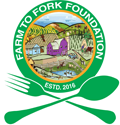Supplementation of lemon juice through drinking water on performance, egg quality, serum biochemical indices and combat heat stress in laying pullets
DOI:
https://doi.org/10.5455/faa.197347Keywords:
Egg, Heat stress, Lemon juice, Pullets, PerformanceAbstract
Numerous feed additives, such as probiotics, prebiotics, organic acids, and enzymes, have the potential to optimize weight gain, feed efficiency and maintain the acid-base balance which eventually contributes to improve production performance. The purpose of the current study was to investigate the possible advantages of lemon juice (LJ) on laying performance, egg quality, serum biochemical properties, and layers' ability to recover from heat stress. Ninety-six Hy-Line Brown layers all 29 weeks were randomly assigned to four treatments, each with six replications, and were given a six-hour daily drinking experiment. The birds were provided with 0% (control), 0.5%, 1% and 1.5% LJ respectively for 6 weeks. The temperature, humidity, hen day egg production (HDEP) and egg weight (EW) were recorded. Egg quality indices were measured bi-weekly. An analysis of total cholesterol (TC), triglycerides (TG), low-density lipoprotein (LDL), high-density lipoprotein (HDL), blood glucose, aspartate aminotransferase (AST), alanine aminotransferase (ALT), packed cell volume (PCV), heterophil (H), lymphocyte (L) count, and heterophil-lymphocyte (H/L) ratio was performed on the blood sample collected at the end of the experiment. The studied parameters among the various treated groups showed that the egg weight, feed conversion ratio (FCR), egg quality parameters, HDL, TG, AST, heterophil count, lymphocyte count and H/L ratio did not differ significantly (P > 0.05). HDEP, egg mass output (EMO) and FI differed significantly (P < 0.01) compared to the control group. The significant reduction in TC, LDL, glucose, ALT, increase in feed intake, HDEP and PCV showed that LJ had a positive effect in reducing the adverse effects of heat stress in laying pullets. Taken together, it may be concluded that LJ can be used to improve the laying performance and reduce the heat stress in layers.
Downloads
Downloads
Published
How to Cite
Issue
Section
License
Copyright (c) 2024 By the Author(s)

This work is licensed under a Creative Commons Attribution-NonCommercial 4.0 International License.




















